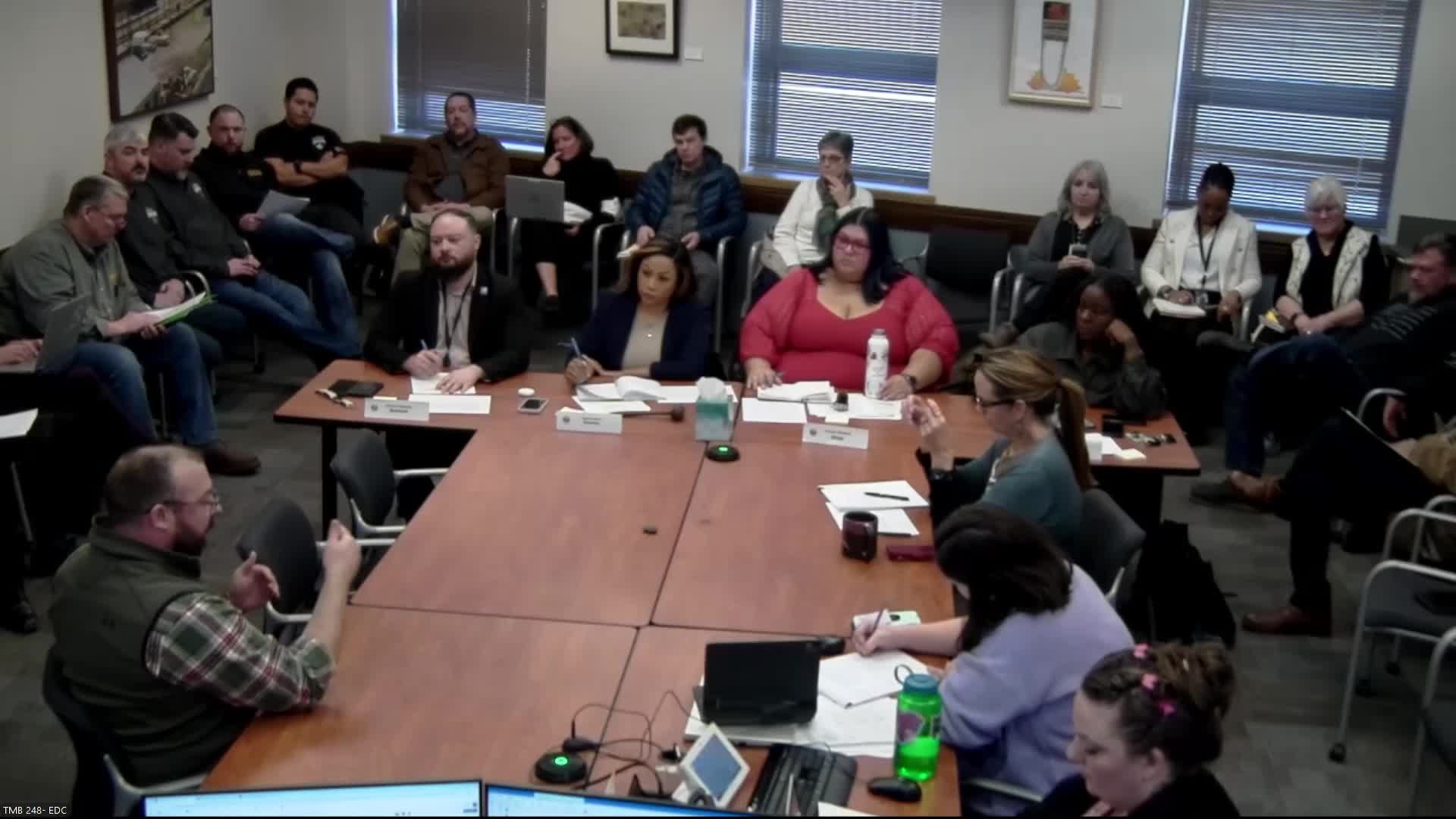Tacoma labor leaders call for community workforce agreements to combat wage theft
February 11, 2025 | Tacoma, Pierce County, Washington
This article was created by AI summarizing key points discussed. AI makes mistakes, so for full details and context, please refer to the video of the full meeting. Please report any errors so we can fix them. Report an error »

In a recent meeting of Tacoma's Economic Development Committee, discussions centered on the pressing issues of wage theft and the need for community workforce agreements to protect local workers. The atmosphere was charged with urgency as participants highlighted the detrimental effects of shortcuts taken by contractors in the construction industry, particularly in low-income housing projects.
A tile setter shared firsthand experiences of how corners are often cut during waterproofing processes, leading to long-term damage that goes unnoticed until it's too late. This practice not only jeopardizes the integrity of buildings but also places the burden of liability on independent contractors, who are often pressured to work faster and cheaper. The speaker emphasized that this cycle of exploitation results in significant wage theft, estimating losses of around $200 million for workers in the region.
The conversation shifted towards the potential benefits of implementing community workforce agreements, which have been successfully adopted in Seattle and King County. These agreements would require contractors to prioritize local hiring and provide training opportunities, thereby fostering a more sustainable workforce. By ensuring that a percentage of work is performed by local workers, the agreements aim to uplift the community and combat the race to the bottom in labor standards.
Nate Lauber, representing the Pierce County Central Labor Council, echoed these sentiments, stressing that wage theft disproportionately affects vulnerable populations, including immigrants and refugees. He called for greater transparency in contracting processes and the need for the city to take a proactive stance in enforcing fair labor practices.
As the meeting progressed, committee members expressed a desire to explore how to incorporate protective language into future contracts and ensure that local workers are not only hired but also trained for sustainable employment. The discussions underscored a collective commitment to improving labor conditions and supporting the local economy, leaving attendees with a sense of hope for meaningful change in Tacoma's construction landscape.
A tile setter shared firsthand experiences of how corners are often cut during waterproofing processes, leading to long-term damage that goes unnoticed until it's too late. This practice not only jeopardizes the integrity of buildings but also places the burden of liability on independent contractors, who are often pressured to work faster and cheaper. The speaker emphasized that this cycle of exploitation results in significant wage theft, estimating losses of around $200 million for workers in the region.
The conversation shifted towards the potential benefits of implementing community workforce agreements, which have been successfully adopted in Seattle and King County. These agreements would require contractors to prioritize local hiring and provide training opportunities, thereby fostering a more sustainable workforce. By ensuring that a percentage of work is performed by local workers, the agreements aim to uplift the community and combat the race to the bottom in labor standards.
Nate Lauber, representing the Pierce County Central Labor Council, echoed these sentiments, stressing that wage theft disproportionately affects vulnerable populations, including immigrants and refugees. He called for greater transparency in contracting processes and the need for the city to take a proactive stance in enforcing fair labor practices.
As the meeting progressed, committee members expressed a desire to explore how to incorporate protective language into future contracts and ensure that local workers are not only hired but also trained for sustainable employment. The discussions underscored a collective commitment to improving labor conditions and supporting the local economy, leaving attendees with a sense of hope for meaningful change in Tacoma's construction landscape.
View full meeting
This article is based on a recent meeting—watch the full video and explore the complete transcript for deeper insights into the discussion.
View full meeting
